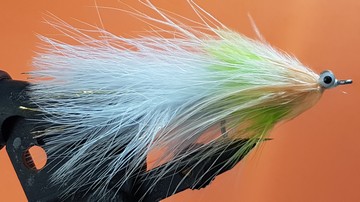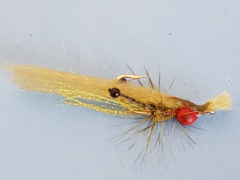Posts Tagged ‘Bream’
{{start}}
Bream are both opportunistic feeders and predators in that on the one hand they will foraging around the bottom, in and around structure for tucker yet on the other hand they will will take advantage of structure and wait for food to come to them. They eat a wide range of tucker including prawns, shrimp and other crustaceans, crabs, molluscs such as oysters and worms. They generally feed in small group from the same cohort in and around weed beds, drowned timber, man made structures including bridge pylons, pontoons and bridges, under moored boats and even on flat open sandy and muddy bottoms searching for food.
You can fish for bream on a #6 weight outfit and very light leaders and that can be a lot of fun but in Central Queensland I suggest that you go up to an #8 weight outfit with a leader that has a butt section half the rod length of 12lb and a tippet half the rod length of up to 7lb fluorocarbon. The reason for the heavier outfit in CQ is that you never know when your going to get more than what you bargained for from other species including grunter, flathead, pelagics or even barramundi.
My default fly line is an intermediate but I do carry a floating line for surface feeding bream and very shallow water and a fast sink line for deeper water or to contend with currents and wind.
In any case put in a long cast to where the fish or holding or you expect them to hold and retrieve the fly or flies using a range of retrieves until you work out what suits the bream and the conditions at that time. Hits can be on the drop, retrieve, a pause, the hang or on the lift. Don’t strike at a hit to aggressively and just hand strike the line or wrist strike the fly rod to set the hook. If the fish doesn’t hook up let the fly settle as the same fish or others are just as likely to try again.
During summer most bream caught in estuary waters will generally be 20cm to 30cm in length but in the depths of winter particularly around river mouths, rock walls and rocky reefs you can expect congregations of generally bigger bream.
{{end}}
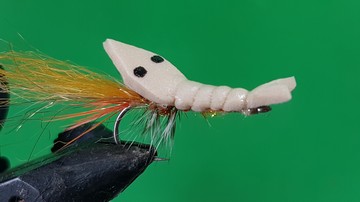
{{+1}}Foam back prawn{{-1}}
{{start}}
This fly is a floating version of my PET prawn fly and can be a real game changer and so much fun when estuary species, particularly bream and whiting, are feeding on the surface.{{end}}
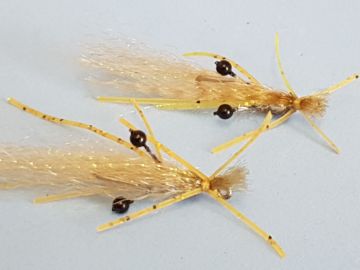
{{+1}}Tidal flats shrimp – tan{{-1}}
{{start}}
This fly is basically my original mud prawn that I released in 2003 and have now miniaturised and modified so as to represent the sort shrimp that you find on tidal flats in tropical waters. As an aside I note there is anecdotal evidence that there are permit and even bonefish on some of the local Central Queensland tidal flats so the search is on to find them. This tan version is the most translucent of my tidal flats shrimp and is my go to version for crystal clear water.{{end}}
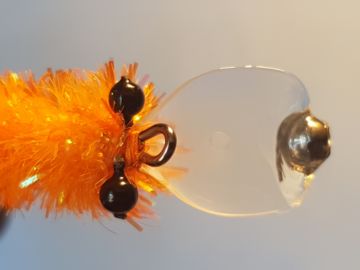
{{+1}}Articulated slow roller – size #1 to #1/0{{-1}}
{{start}}
I tie these downsized version of my original articulated slow roller fly in sizes #1 and 1/0 sizes and fish them on my #8 weight fly rods with 20lb Maxima Ultra Green leaders. They are an absolute treat for native bass and all sorts of estuary and coastal species including bream, flathead, and mangrove jack and smaller pelagics including trevally and queenfish.{{end}}

{{+1}}Rubber legged olive gotcha{{-1}}
{{start}}
This is a popular rubber tailed Gotcha type fly which is very similar to other peoples ties. It has it's place in your bonefish fly box for those occasions where the bones shy away from the bright colours of most other bone fish flies.{{end}}
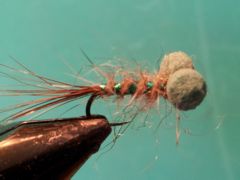
{{+1}}Hares ear booby{{-1}}
{{start}}
This is a nifty little fly that merges the hares ear nymph and the traditional booby both very high pedigree flies into one very useful loch fly. It also has a bit of flash about it which helps the fly fill an important role in my fly box for an attractor fly to use on my middle dropper when I loch style fish fish just before, through and after the trout spawning season.{{end}}
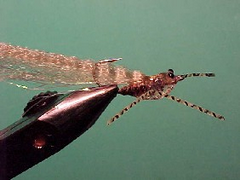
{{+1}}Mud prawn – small 5cm to 6cm long{{-1}}
{{start}}
The mud prawn is my first choice of fly for general prospecting in estuary waters or for targeting, whiting, flathead and bream. In water of only a meter or so fish it on an intermediate line. In deeper water I prefer to fish it on a sinking line. The best retrieve is a jerky but slow retrieve leaving plenty of time between strips for he fly to settle back on the bottom. used in this way it's a good representation of a prawn fleeing from its sandy retreat after being disturbed.{{end}}
















